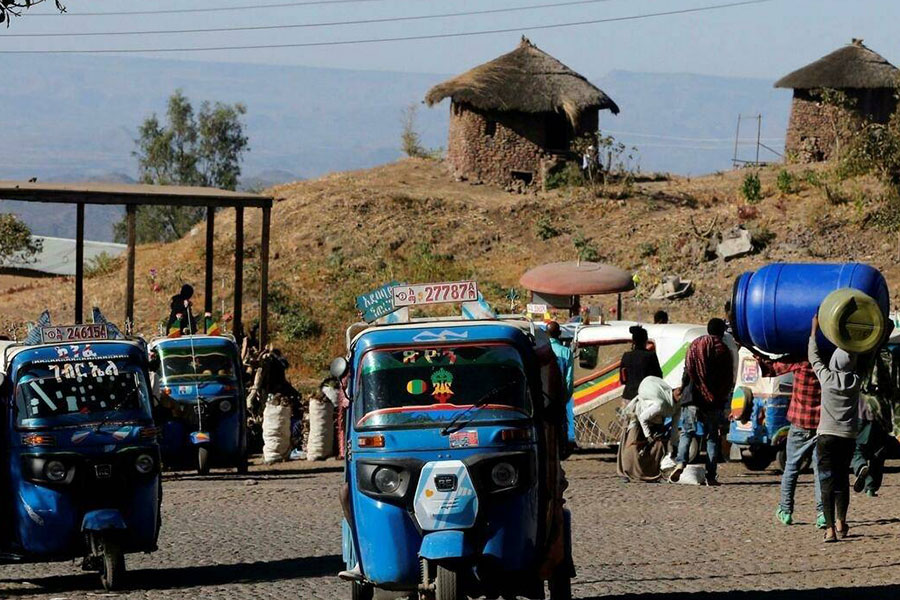
The circumstance of this girl, carrying a child on her back, fleeing her home for safety, is the collateral damage of the armed conflict in Tigray Regional State. Coming on the back of calls for aid to the region, including an agreement reached between the government and the United Nations and pleas concerning a funding gap, the trickle of refugees has been the face of the conflict. There are now around 50,000 people that have fled the fighting and settled in camps in Sudan.
It was also one of the issues that Prime Minister Abiy Ahmed (PhD) brought up when appearing before MPs last Monday. He was buoyant, nonetheless, asserting in no uncertain terms that the Federal Defence Forces have prevailed. He spoke for nearly two and a half hours, using the bully pulpit to justify the military operation in Tigray Regional State and accusing the Tigray People’s Liberation Front (TPLF) of gross injustices and wrongful attacks.
It was a speech meant just as much for an international community. He was strongly worded in his warning that this is Ethiopia’s problem and its own to resolve. For the TPLF, his message was that he has a birds-eye view of their movements all the way from the situation room in Addis Abeba. Over the week, social media was awash with pictures from this purported room, where he appeared with his military commanders in army fatigues.
The TPLF has remained defiant. After weeks of claiming progress on several battlefronts, it has admitted that its leaders have left Meqelle, the capture of which led the federal government to declare "victory". They say that the fighting continues and that they have only made a strategic retreat.
“The war hasn't stopped. It won't stop,” said Getachew Reda, one of the senior TPLF members, appearing on a television interview where he repeated claims of Eritrean involvement in the armed conflict. No hard proof of this assertion has been presented yet.
Many claims from both sides remain hard to verify, although it is clear that most major towns are now under the control of the federal government but that fighting continues in the rural parts of the region.
Many observers believe that the TPLF retains the capability to sustain a protracted guerrilla-style armed struggle. This does nothing to alleviate the tense situation in the Horn region, a focal point for political instability, with its most populous country having now slid into armed conflict.
PUBLISHED ON
Dec 05,2020 [ VOL
21 , NO
1075]

Viewpoints | Jul 17,2022

Editorial | Nov 21,2020

Viewpoints | Sep 06,2025

Radar | Aug 30,2025

Agenda | Nov 06,2021

Dec 22 , 2024 . By TIZITA SHEWAFERAW
Charged with transforming colossal state-owned enterprises into modern and competitiv...

Aug 18 , 2024 . By AKSAH ITALO
Although predictable Yonas Zerihun's job in the ride-hailing service is not immune to...

Jul 28 , 2024 . By TIZITA SHEWAFERAW
Unhabitual, perhaps too many, Samuel Gebreyohannes, 38, used to occasionally enjoy a couple of beers at breakfast. However, he recently swit...

Jul 13 , 2024 . By AKSAH ITALO
Investors who rely on tractors, trucks, and field vehicles for commuting, transporting commodities, and f...

Oct 11 , 2025
Ladislas Farago, a roving Associated Press (AP) correspondent, arrived in Ethiopia in...

Oct 4 , 2025
Eyob Tekalegn (PhD) had been in the Governor's chair for only weeks when, on Septembe...

Sep 27 , 2025
Four years into an experiment with “shock therapy” in education, the national moo...

Sep 20 , 2025
Getachew Reda's return to the national stage was always going to stir attention. Once...